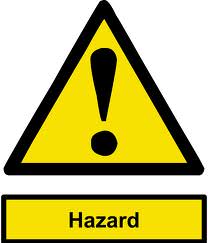Studies show that there is a high rate of injury for children who are born to teenage parents. Lack of experience and knowledge is to stand responsible for these rates. Whether the incident was intentional or unintentional, there are many injuries that can be prevented with a proper knowledge of child safety.
Child Safety in the Home
The majority of injuries that children face when they have teenage parents occur in the home; most occur from falls and ingesting foreign objects. According to Dr. Robertson, “Injury prevention efforts for teenage parents should be devoted to preventing falls and foreign body ingestions.” Dr. Robertson makes this statement not only because falls and ingestion are very common, but also because both can have lasting damage.
According to the journal Pediatrics the number of injuries of children with teenage parents has increased dramatically from 2009 to 2011. In just two years doctors have seen an increase in bruising, skin marks, fractures, dislocations, head injuries, and foreign body ingestions. If teenage parents knew how to prevent falls and dangerous ingestions and learned to be more aware of their child’s surroundings these numbers would decrease. In turn, this would allow children to live a happier life.
Child safety in the home is the first step to protecting your child. Young children spend most of their time at home. Children are also very curious and like to try new things, this is an important child safety tip to know. Here are a few more tips to help teenage parents understand child safety while they are at home.
> Never leave a young child unattended
> Place locks on all doors and cabinets
> Be aware of harmful chemicals in your house
> Remove any sharp or heavy objects from anywhere your child could possibly reach
> Remove or secure heavy items from up high where a child could knock them down
> Keep caps on all electrical outlets.
> Keep windows mostly closed to prevent children from falling out
> Keep a locked gate around any stairs
> Keep children strapped in when using high chairs, strollers or swings
> Keep a carbon monoxide monitor in your house
> Maintain your fire alarms
> Do not leave water sitting in the bath tub, in sinks or in any containers within reach of your child
> Keep medications locked up and out of reach of your child
> Keep food and alcohol locked up and out of reach of your child
> Limit stuffed animals, blankets, and pillows when your child is sleeping
There are many different ways that a child can be injured in the home. It is impossible to list every child safety hazard. Go around your house and make a list of possible child safety hazards for your child and come up with a solution to avoid them or get rid of them. Ask a parent or trustworthy adult for help as well when you are child-proofing your house. They may see something that you may not recognize as a child safety hazard. Constantly keep an eye on your child and know what they are doing at all times. The safety your child is important. The more informed you are about child safety, the safer your child will be. If you have any questions visit your doctor.


